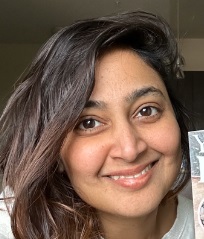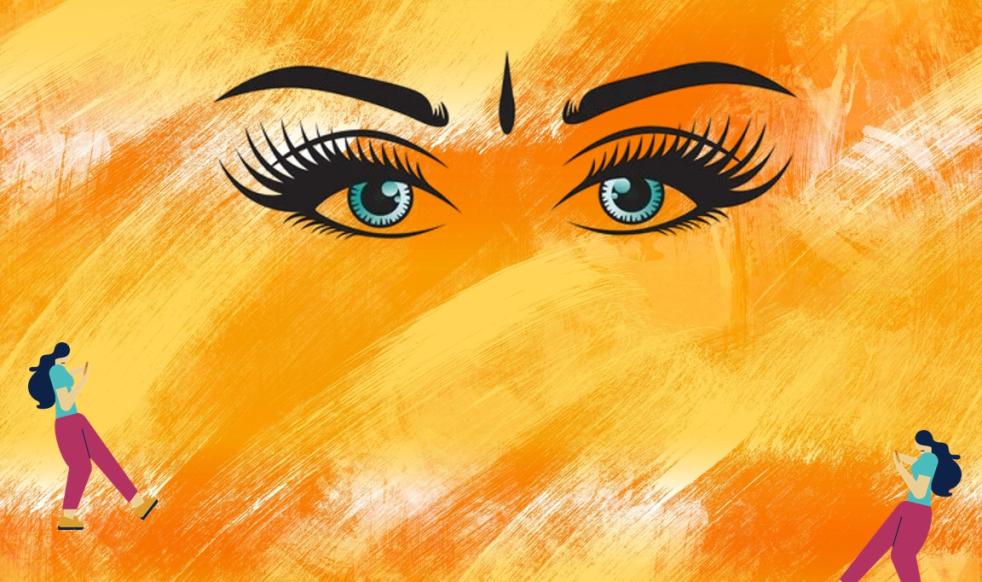What happens when two Indians make accidental eye contact in America? Nothing... everything.
This is a personal account of what went through my mind one winter’s evening, as I took a walk along Castro Street, Mountain View, earlier this year.
But first, here’s a quick context of my station in life: This was less than six months after moving to the Bay.
The wind was strong that day. The chilly gust spawned a sea of goose-pimples on my forearms. Despite the layers I wore – a jacket, a sweater and two t-shirts – my body hair overreacted to the wind and strained against the layer closest to my skin, my favourite maroon t-shirt. Understandably, it will be some years before my tropical skin gets used to the assault of winter in the northern hemisphere.
Anyway, as I crossed the street, I inadvertently locked eyes with an Indian woman crossing the road from the other side. We walked towards one another and time slowed down for a second, no more. I didn’t notice the brand on the takeaway coffee cup in the woman’s hand nor was there time to register the exact colour of her beanie. All I saw was a person with the same roots as me. And somehow, I could tell that so did she.
As our gaze lingered for a touch longer than was normal or necessary, our shared history, common ancestry and a porous sense of belonging flashed between us like a movie on a private screen that hung between us, a curtain only we could see.

We both were familiar with the ghosts of 1947 and harboured complicated feelings towards our common colonial past; an Indian who has never actually met a Britisher or a Pakistani, unknowingly consults trans-generational templates when she does, owing to her immediate or inherited experience of the Raj and partition.
We knew that both our brains held mysterious neural circuitry created by years of ingesting monosodium glutamate or ‘aginomoto’, abundant in Chinese food in India aka ‘Chindian’ food; we intimately knew the mad joy a steaming heap of schezwan-manchurian fried rice, saturated with spice, salt, oil and food dye, could bring. We also knew what the heady mix of vacuum-packed preservatives, fat, comfort and nostalgia, found in a yellow packet of Maggi Noodles felt like, especially on a bad day.
We also knew why it was absolutely understandable when a guest was happy to devour a non-vegetarian meal at our homes on a Monday only to aggressively turn the same dish down on a Tuesday, saying “aaj mera mangalvaar hai” (in observance of Tuesday).
Both of us had experienced the phantasmagorical magic of Shah Rukh Khan and felt like we owned a slice of Engelberg thanks to Yash Raj Films.
We were both equally embarrassed about the ugly nuances of present-day Hinduism – Hindutva, Hindu-phobia, contemporary caste politics – and the long shadow of socio-religious divisiveness that followed us Indians to foreign shores.
At some point, we’d both squirmed at the misinformed hyperbolic versions of India peddled at dinner tables and social gatherings, and said, “Not all Indian food is curry,” through gritted teeth and polite smiles.
We were aware of the inexplicable, irrational kinship we felt with a complete stranger for no reason other than the fact that they’re dressed in six yards of fabric or wear a dot on their forehead.
We both knew the sense of powerlessness that came when eve teasers broke into a low-pitched Hindi movie song on an Indian street, albeit from a distance, and, in contrast, understood the complete absence of sexual tension when the tiny (somehow, they were always stunted, weren’t they?) neighbourhood darzi wrapped a tape around our hips to measure our girth for a kameez back home.
We’d seen barber shops, salons, third rate cinema halls and restaurants named New York-something in tier two and tier three Indian towns – all collectively aspiring to a stylised Western ideal.

Decades after living abroad, our tongues would roll in the same way while speaking our respective native language, one of over a hundred spoken in India, with an accent that is neither here nor there but belongs to a nebulous nation, located between the amygdala and the hippocampus, inhabited by many a non-residential Indian.
Whether we are first or second-generation Indians settled in an adopted country doesn’t matter; we’re bonded by pigmentation. And this bond is acknowledged in one fleeting moment of eye contact, sometimes accompanied by an imperceptible tug at the end of chapped lips, an incline of the head, a tenth of a nod, a slight softening of the eyes… a silent, ephemeral tribute to the commonalities shared by strangers in a strange land, united by an estranged motherland.
All of it in one flash before it’s over. But it’s enough.
 |
Ashwini Gangal is a fictional writer and author based in San Francisco, USA. |
This article "Brown Gaze: The Silent Language Of Indian Strangers In An Adopted Country" was first published on India Currents.

 204 Views
204 Views 0 comments
0 comments
Comments